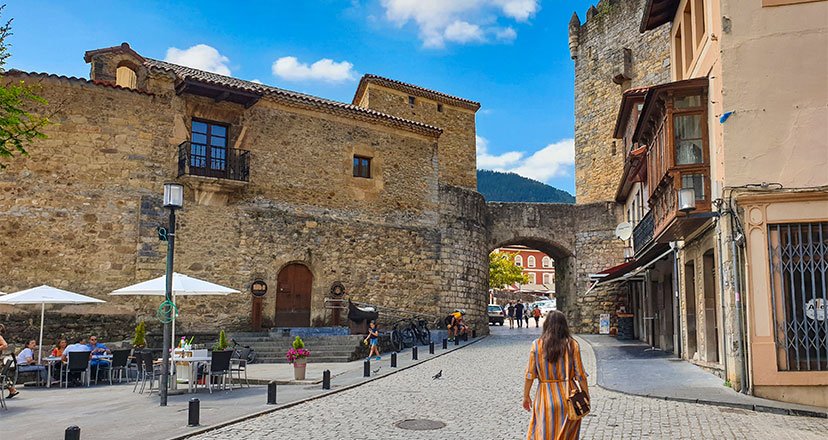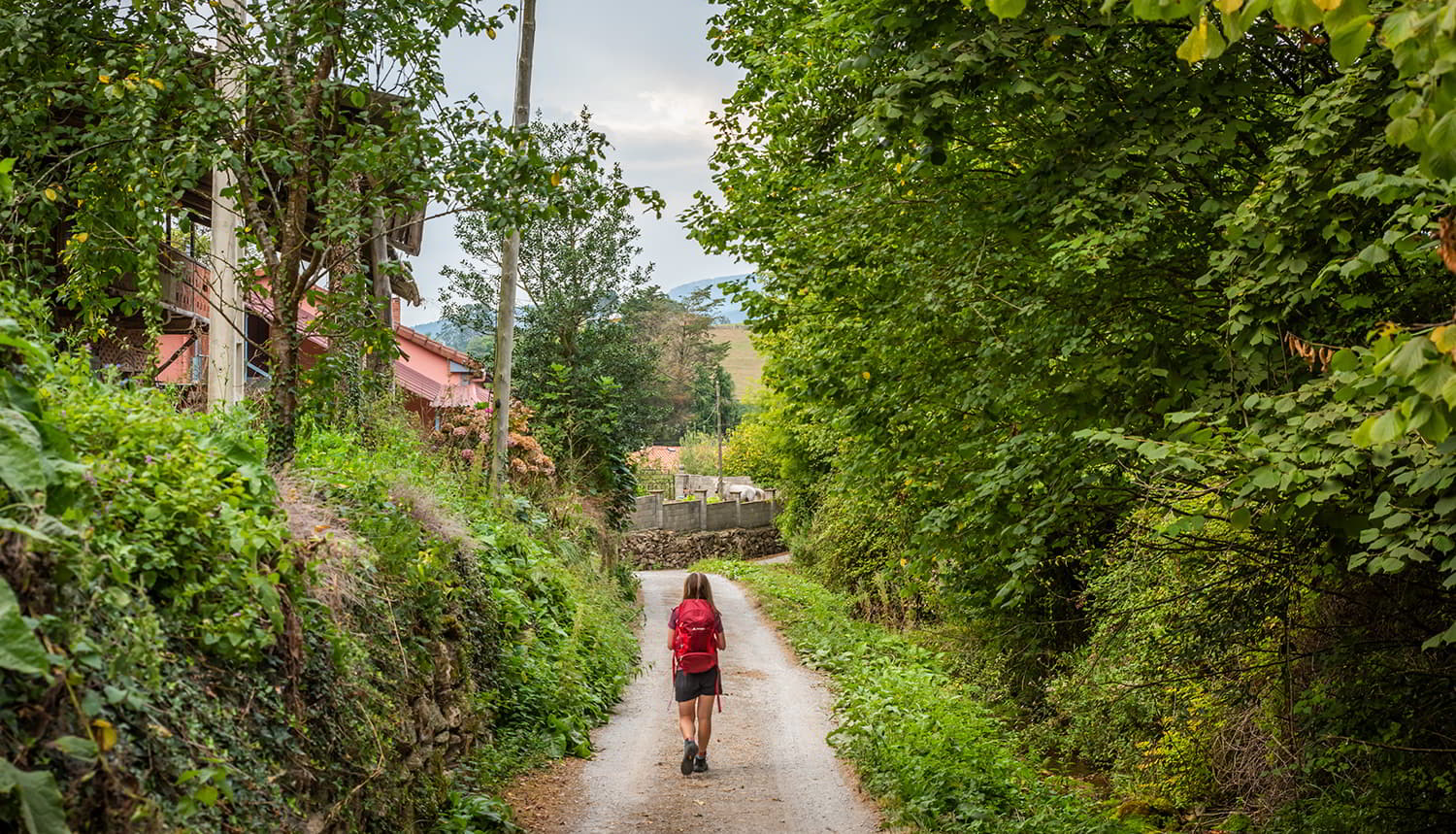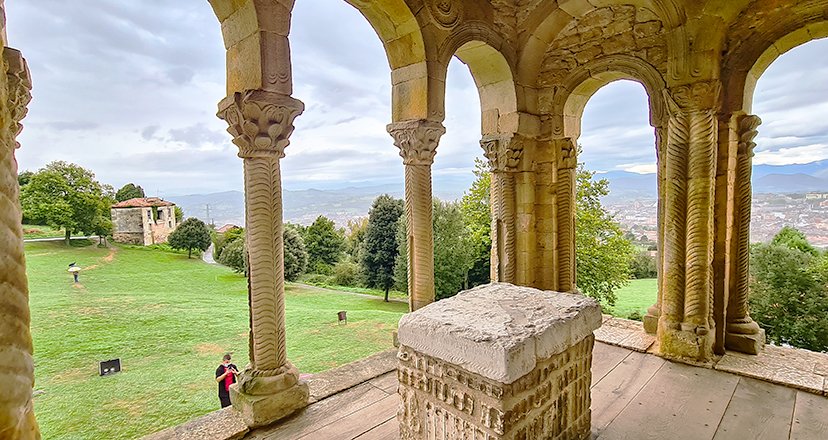Atrás Salas, tierra medieval, legendaria y jacobea
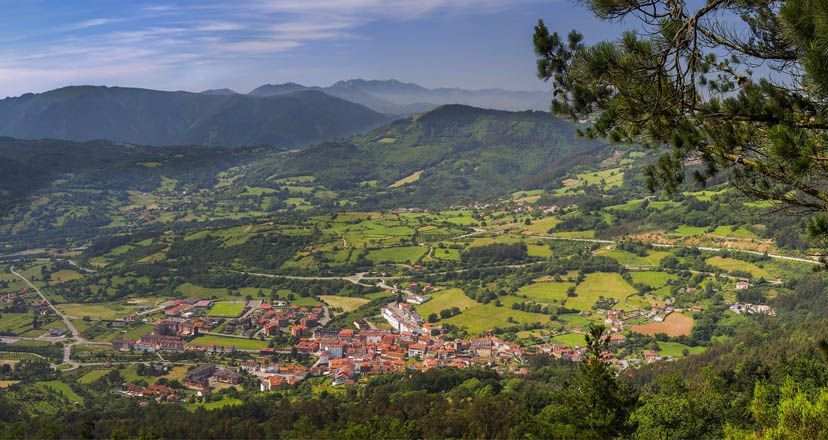
Salas, tierra de historias medievales, leyendas y peregrinos
Salas es un lugar de leyendas y de nobles señoríos. Además es tierra de paso del Camino de Santiago Primitivo y un sitio espléndido para detenerse.
Si Alejandro Dumas hubiera nacido en Salas es muy probable que los tres mosqueteros vivieran sus grandes aventuras entre el Castillo de Valdés-Salas, la colegiata de Santa María la Mayor, la iglesia de San Martín, el santuario de la Virgen del Viso y el pueblo Indiano de Malleza.
Y es que Salas es tierra de leyendas tan antiguas y tan bellas que inspiran la imaginación de los grandes artistas y también la del común de los mortales. Además, rebosa nobleza por los cuatro costados en el más amplio sentido del término, y eso le confiere un aire muy especial.
Así que Salas, capital y municipio, es tierra de paso y al mismo tiempo es un lugar excelente para detenerse. Es una tierra medieval, jacobea y legendaria. Sus poros respiran cultura y pensamiento, sentimiento y belleza, serenidad y firmeza. Tierra de paso, entre otras circunstancias, porque por ella transcurre el Camino de Santiago Primitivo, que también fue Camín Real.
Un casco histórico que deslumbraría al mismísimo D’Artagnan
Pocas torres medievales quedan en pie en los cascos históricos de las villas y ciudades asturianas con la importancia y envergadura arquitectónica que tiene la del Castillo de Valdés-Salas. Muchos siglos labrados en la piedra se resumen en esta edificación cuyas edades se datan concretamente en tres centurias: XIV, XV y XVI.
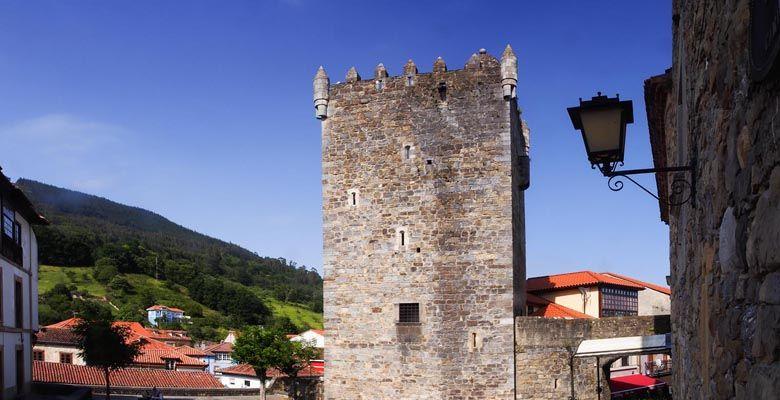
La Torre está convertida hoy en un museo del Prerrománico asturiano, y aún conserva las mazmorras y otros detalles que te trasladan a la Edad Media, y el Palacio se ha transformado en un coqueto hotel que hace las delicias de muchos viajeros y peregrinos de medio mundo que transitan por la villa en su deambular por el Camino de Santiago Primitivo, y es que además se da la circunstancia de que en su parte salense, la ruta jacobea transcurre justo por debajo del puente de arco de medio punto del Castillo de Valdés-Salas.
Resulta además que este castillo fue la casa natal de Fernando de Valdés-Salas, destacado eclesiástico y político del siglo XVI en España, cuya apasionante biografía tiene uno de sus episodios más destacados en el hecho de haber sido el impulsor de la fundación de la Universidad de Oviedo. Y aunque D. Fernando pasó la mayor de su vida fuera de Asturias, sus restos reposan en Salas, en la colegiata de Santa María la Mayor, cuya construcción fue promovida por él y en cuyo interior descansan también sus padres. Fernando de Valdés-Salas siempre quiso volver a su tierra, hasta tal punto que dejó dispuesto en su testamento que si moría de Sierra Morena para abajo su cuerpo iría a Sevilla, donde había sido arzobispo, pero si lo hacía de Sierra Morena para arriba, volvería a su casa, y como al final muere en Madrid, reposa para siempre en Salas.
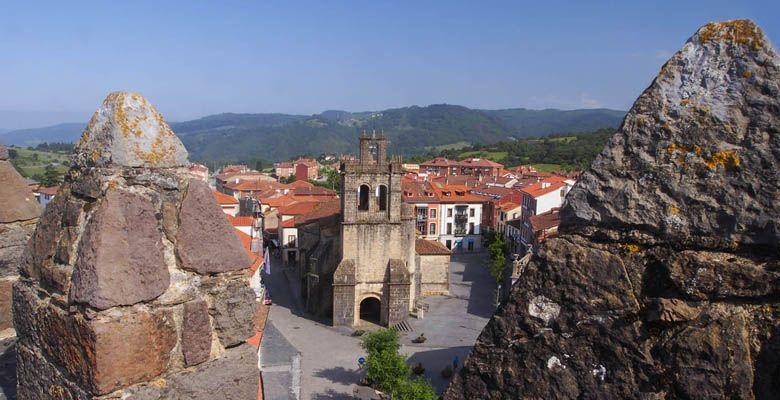
La Colegiata de Santa María la Mayor es una de las más preciadas joyas de un casco histórico que no dejará de sorprenderte, por su belleza y por su historia. La colegiata de Salas te dejará con la boca abierta cuando contemples su retablo y el mausoleo de Fernando de Valdés-Salas, esculpido en alabastro por el escultor Pompeo Leoni en el mismísimo siglo XVI, y realizado merced a una disposición testamentaria de D. Fernando.

Además, y como dato curioso se da la circunstancia de que la Colegiata de Salas fue hasta hace pocas décadas propiedad de la Casa de Alba - al igual que ocurrió con el castillo y numerosas fincas -, que la recibieron en su momento en herencia merced al parentesco de los Valdés-Salas con esta Casa.
Asimismo, hoy en día una parte del Castillo es la sede de la Fundación Valdés-Salas - que cuenta con un aula de Extensión Universitaria -, y que le aporta a esta apacible villa del occidente asturiano una incesante vida cultural, dada la importante labor de divulgación del conocimiento que constantemente realiza.
Así que con todos estos ingredientes no sería de extrañar que hasta el mismísimo D’Artagnan, si se reencarnase en Asturias, se sintiera fascinado con Salas, donde nobleza y leyenda se abrazan a cada paso.
La elegancia y belleza del Prerrománico de San Martín de Salas
Muchos avatares ha vivido la iglesia de San Martín de Salas desde el siglo X. La que antaño fuera iglesia parroquial de Salas, ubicada en un alto, a tan solo un kilómetro de la villa, conserva el encanto de la antigüedad, a pesar de las muchas reformas que ha ido experimentado a lo largo del tiempo.
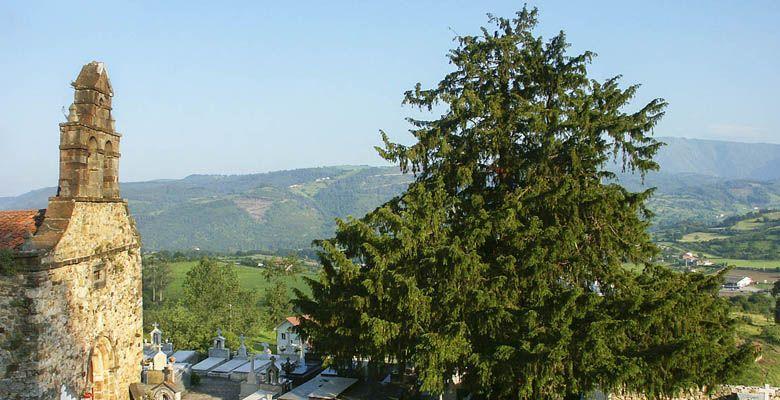
Literalmente abrazada por un cementerio que le confiere un aire entre romántico y misterioso, digno de una trama de novela histórica, San Martín conserva parte de sus elementos prerrománicos fundacionales, aunque lo que se exhiben en sus muros son fidedignas réplicas, ya que los originales – como medida de protección patrimonial – se muestran y explican en la Torre del Castillo de Valdés-Salas.
Cuando llegas a San Martín de Salas, justo al traspasar la verja de entrada al recinto de iglesia y camposanto, te podrás cobijar bajo un tejo, sobre todo si calienta el sol, y unos metros más allá, en medio del cementerio, otro tejo - éste milenario - vuelca su magia y proyecta su sombra sobre los enterramientos, como si acompañara eternamente a los allí yacentes.
La sensación en el recinto es de paz total, y de encuentro con el arte más antiguo y característico de la monarquía asturiana: el prerrománico, si bien la iglesia de San Martín ha vivido reformas y cambios a lo largo de los siglos, especialmente durante el siglo XV y también en el siglo XVIII.
Cuando dejas San Martín puedes continuar el ascenso por la sinuosa carretera, que, entre curvas, bosque y buenas vistas, te lleva al Santuario del Viso.
Santuario del Viso, una atalaya divina
Desde tiempo inmemorial se venera en Salas a la Virgen del Viso, siendo este santuario mariano uno de los más destacados - junto al de L'Acebu en Cangas del Narcea -, de todo el occidente asturiano.
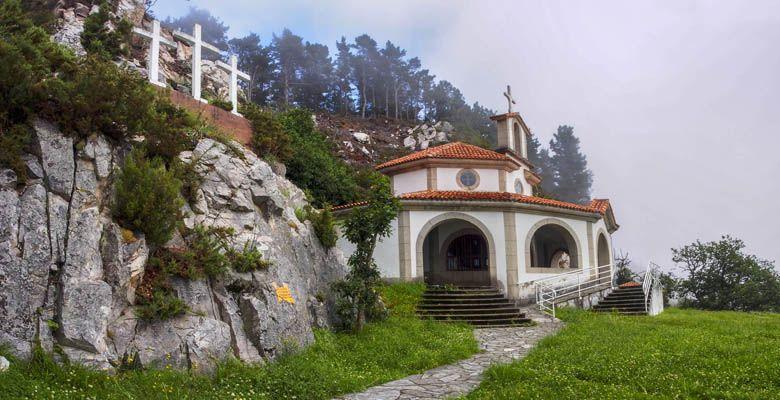
Cuando llegas al Viso te impresionan sus robles centenarios, sus cruces clavadas en la roca, sus vistas panorámicas, como si de una atalaya infinita sobre el paisaje se tratara y los versos que allí rezan:
Oh mi Virgen del Viso,
Yo de ti no me despido,
Que para el año que viene,
Tengo que volver si vivo
Al Viso acuden los devotos de todos los lugares, además de los salenses que desde siempre celebran esta advocación.
Pero si no eres devoto, no importa. Decenas de viajeros llegan haciendo senderismo o bici, o simplemente parando con su coche en la zona para deleitarse con el entorno.
Además, si continúas un poco más por la carretera hacia lo más alto, te encuentras el mirador del Viso, donde tienes una agradable área recreativa y donde en los días despejados podrás contemplar las montañas de media Asturias.
La cascada del Nonaya, legendaria y jacobea
Las cascadas fluviales en Asturias son siempre el refugio perfecto para las xanas y otros seres fantásticos que podrás encontrarte en algún momento de tu viaje, y la cascada del río Nonaya no es una excepción: como toda cascada que se precie tiene su leyenda, y ésta concretamente cuenta que los mozos de buen ver y con ganas de encontrar a su media naranja, es posible que en algún momento vean a la xana del Nonaya y escuchen su canto.
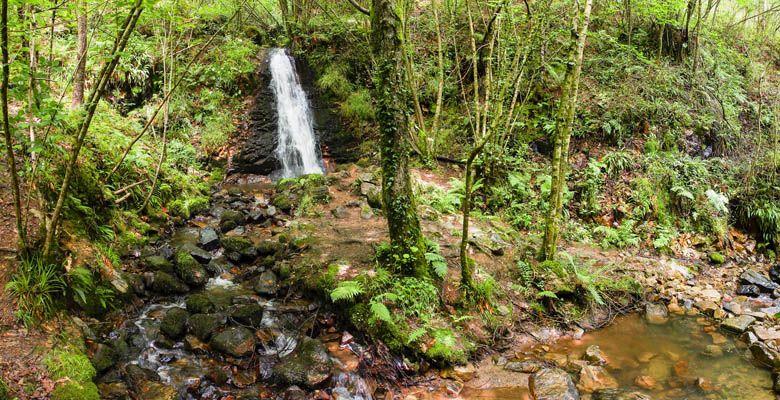
Y si te acercas a la cascada del Nonaya, aunque no veas a la xana, casi seguro te encontrarás con algún peregrino o peregrina de los que hacen el Camino de Santiago Primitivo, y que se desvían unos metros de su ruta para contemplar la belleza natural del entorno y refrescarse con los efluvios del Nonaya.

El escenario es absolutamente idílico, con su puente, su bosque y la gran sorpresa de este salto de agua natural…
Así que la cascada del Nonaya es legendaria, gracias a su xana, y jacobea, por su total proximidad al Camino de Santiago ¡Única en Asturias!
Malleza, de la panera asturiana a la palmera indiana
Malleza es una auténtica “isla” indiana en el interior de Asturias, y por eso es conocida como la Pequeña Habana. Y lo cierto es que no le faltaba razón a quién la bautizó así.
Sus casas de vivos colores, con impresionantes galerías y cuidados jardines con palmera, delatan el pasado de abundante emigración a América de los habitantes de la zona, y el amor incondicional por su tierra de origen.
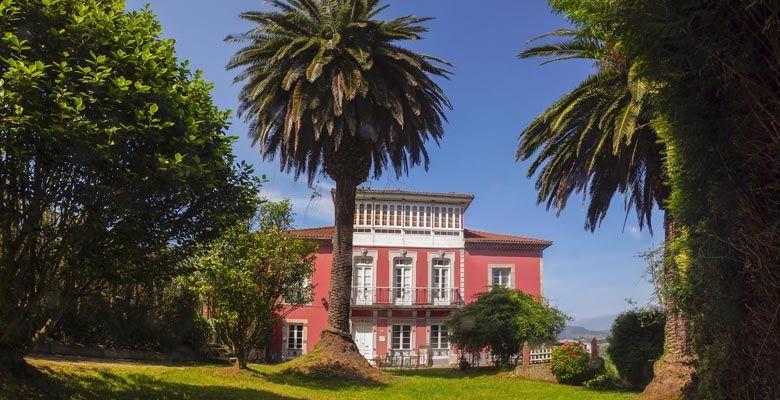
Malleza enamora a simple vista, con su iglesia rematada por una curiosa y llamativa cúpula, algo nada habitual en la Asturias rural. El dulce sosiego de la plaza del pueblo, rodeada de casas indianas de señorial porte, te impacta especialmente; es como estar de pronto en otro continente, pero con el verdor resplandeciente de la tierra asturiana.

Algo muy curioso también es que en algunas casas indianas de Malleza pueden verse los hórreos y paneras casi al lado, dando la sensación de que el espíritu de la Asturias rural es en realidad un viaje de la panera asturiana a la palmera indiana.
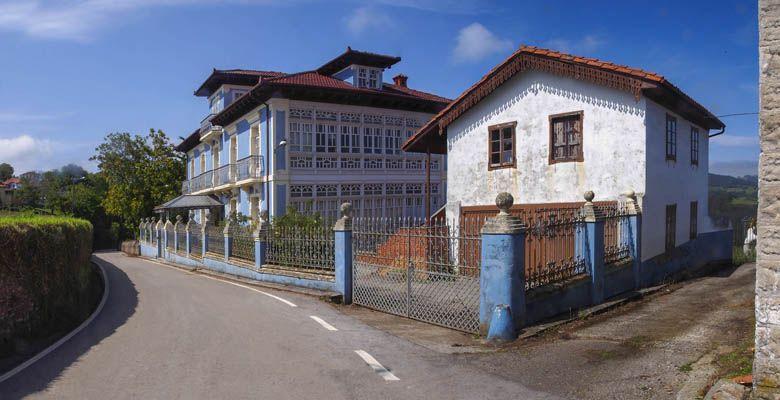
Cuando te despidas de Malleza, que dista apenas 11 kilómetros de Salas capital, llevarás impresas en tu retina las imágenes de quintas inolvidables, grandiosas, apacibles, rodeadas de un paisaje amable, rural y sobre todo muy asturiano.

San Salvador de Cornellana, el hallazgo inesperado
Muy probablemente el sueño de cualquier peregrino es encontrarse en su camino con hallazgos sorprendentes e inesperados, que ponen una nota de emoción y de diversidad en su viaje de espiritualidad y aventura.
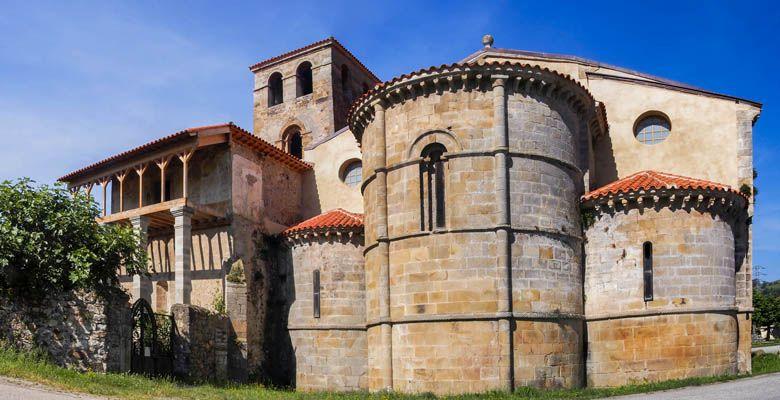
El itinerario jacobeo por el concejo de Salas guarda muchas sorpresas agradables a los peregrinos y tal vez una de las más solemnes es la que tienen los caminantes cuando enfocan en lontananza las torres barrocas de San Salvador de Cornellana o cuando se topan justo al lado del camino con el triple ábside de la iglesia de este monasterio.
San Salvador de Cornellana, con su iglesia y su cenobio resulta imponente en todos los sentidos, y por supuesto es parada obligada para contemplar tanto el exterior como el interior de este conjunto espectacular, que además cuenta en su entorno con un impresionante crucero.
Así que no te olvides que esta ruta de civilización que es el Camino de Santiago tiene en Salas hitos incomparables y uno es San Salvador de Cornellana.
Río Narcea, el segundo río más importante de Asturias
Salas tiene dos arterias fluviales que le dan savia y vida: los ríos Narcea y Nonaya - éste último afluente del primero -. Y curiosamente el Nonaya vierte sus aguas al Narcea en las inmediaciones del monasterio de San Salvador de Cornellana, en una zona maravillosamente fértil, en la que es frecuente encontrar agricultores, peregrinos, pescadores y turistas, que deambulan buscando las bellezas del río o del Camino de Santiago.

El Narcea cobra distintos matices según la hora del día, con las luces y las sombras, con los brillos y los mates, con sus transparencias o sus momentos traslúcidos.
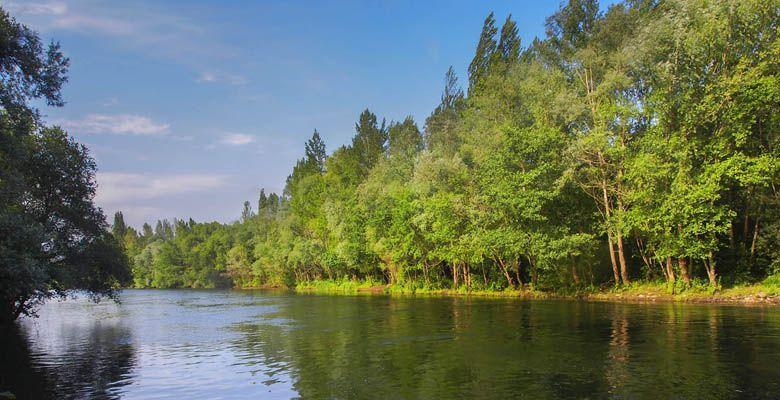
Salmonero por antonomasia, el Narcea es el segundo río de mayor importancia en Asturias después del Nalón, y sus aguas a menudo cristalinas hacen la delicia de pescadores, de espontáneos bañistas, de amantes de los cultivos, y de propios y foráneos dispuestos a disfrutar del ambiente fluvial.
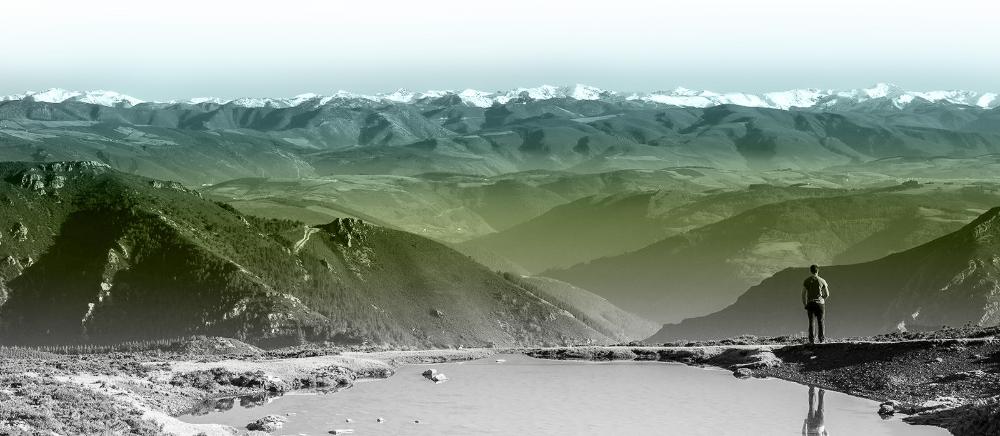
Suscríbete a nuestra newsletter y aprovéchate de ofertas, descuentos, y novedades
Suscribirse

